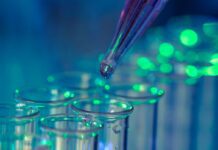
Researchers from the National University of Singapore (NUS) have developed a novel method that combines 3D bioprinting with artificial intelligence (AI) to produce personalised oral soft tissue grafts, offering a promising alternative to conventional gum tissue grafting procedures.
The study, led by Assistant Professor Gopu Sriram from the NUS Faculty of Dentistry, aims to address common challenges in dental treatments for conditions such as gum recession and complications from periodontal disease or dental implants.
Traditional procedures typically involve harvesting tissue from a patient’s mouth, which can be painful and limited by tissue availability.
In contrast, the new method uses a bio-ink formulation and bioprinting process tailored to match the specific anatomical requirements of each patient.
The team’s findings were published in Advanced Healthcare Materials on 17 December 2024. The research was supported by the National Additive Manufacturing Innovation Cluster (NAMIC) and the National University Health System (NUHS).
“This research demonstrates how AI and 3D bioprinting can converge to solve complex medical problems through precision medicine,” said Asst Prof Sriram, who also serves as the Thrust Co-Lead of Dental and Craniofacial 3DP Applications at the NUS Centre for Additive Manufacturing.
“By optimising tissue grafts for individual patients, we can reduce the invasiveness of dental procedures while ensuring better healing and recovery.”
Key to the breakthrough is the integration of AI to optimise the bioprinting parameters—such as pressure, speed, and temperature – that affect the final quality of the printed tissue. Traditionally, fine-tuning these variables requires hundreds or even thousands of experiments.
According to Professor Dean Ho, co-corresponding author of the study and Head of the Department of Biomedical Engineering at the NUS College of Design and Engineering, the team’s AI-driven workflow reduced the number of required tests to just 25 combinations.
“This approach greatly streamlines the proces,” said Prof Ho, who is also Director of the Institute for Digital Medicine (WisDM) and the N.1 Institute for Health at NUS.
The bioprinted gum tissues demonstrated high levels of cell viability, maintaining over 90 per cent survival rates both immediately after printing and throughout an 18-day culture period.
The constructs also retained their shape and structure, and analyses confirmed that they closely resembled natural gum tissue in terms of key protein presence and multi-layered architecture.
Dr Jacob Chew, a periodontist and academic fellow at the NUS Faculty of Dentistry, noted that the patient-specific nature of the bioprinted grafts could significantly reduce surgery time, complications, and discomfort.
“This level of customisation minimises graft distortion and tension during wound closure,” Dr Chew said.
The researchers also see potential applications beyond dentistry. Because oral tissues exhibit scarless healing, the technology could be adapted for other barrier tissues like skin, offering insights into regenerative medicine for broader clinical uses.
Looking ahead, the team plans to conduct in vivo studies to test how well the grafts integrate and perform in oral environments.
They are also exploring multi-material bioprinting to incorporate blood vessels into the tissue constructs, with the goal of developing more complex and functional grafts for future clinical application.



















